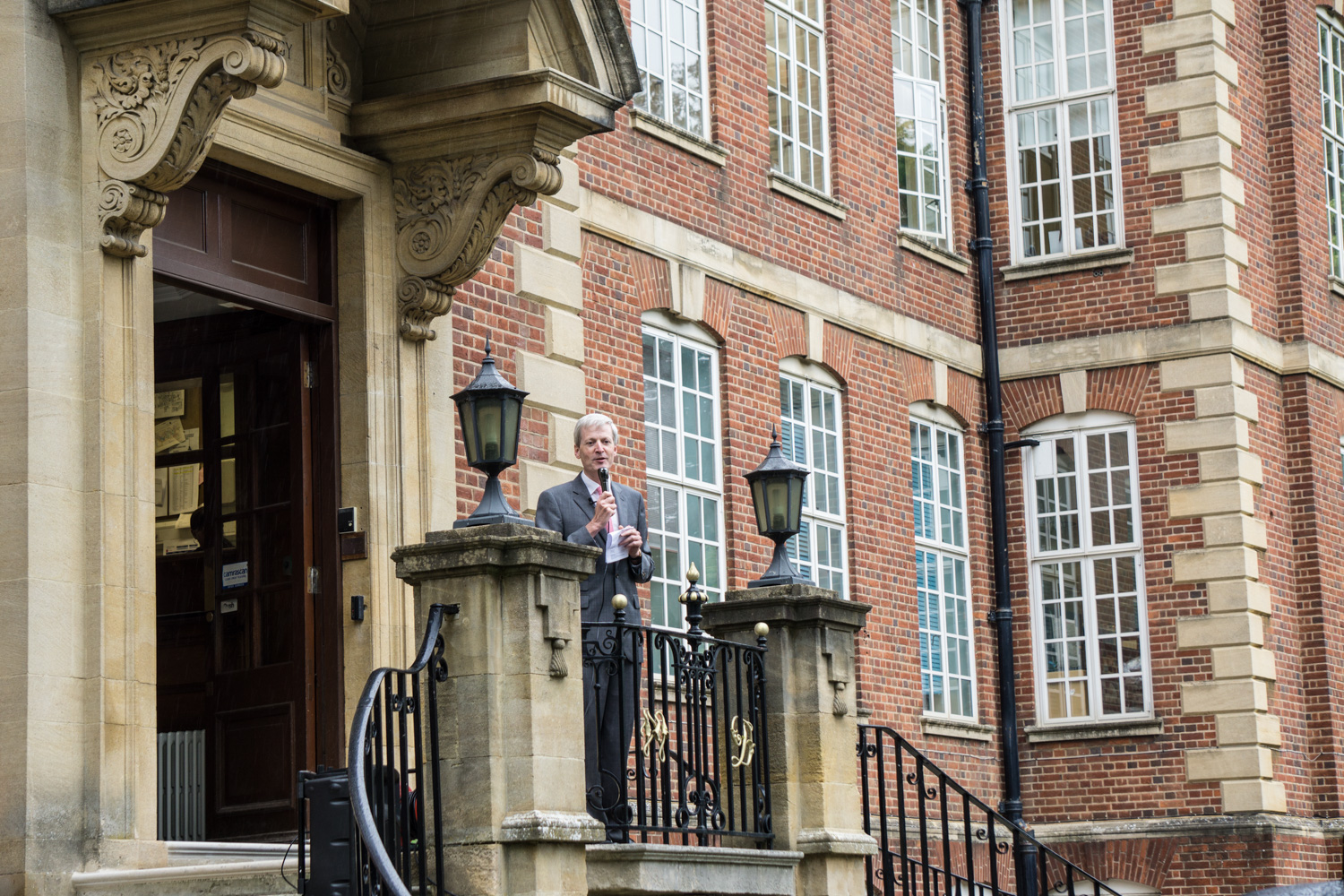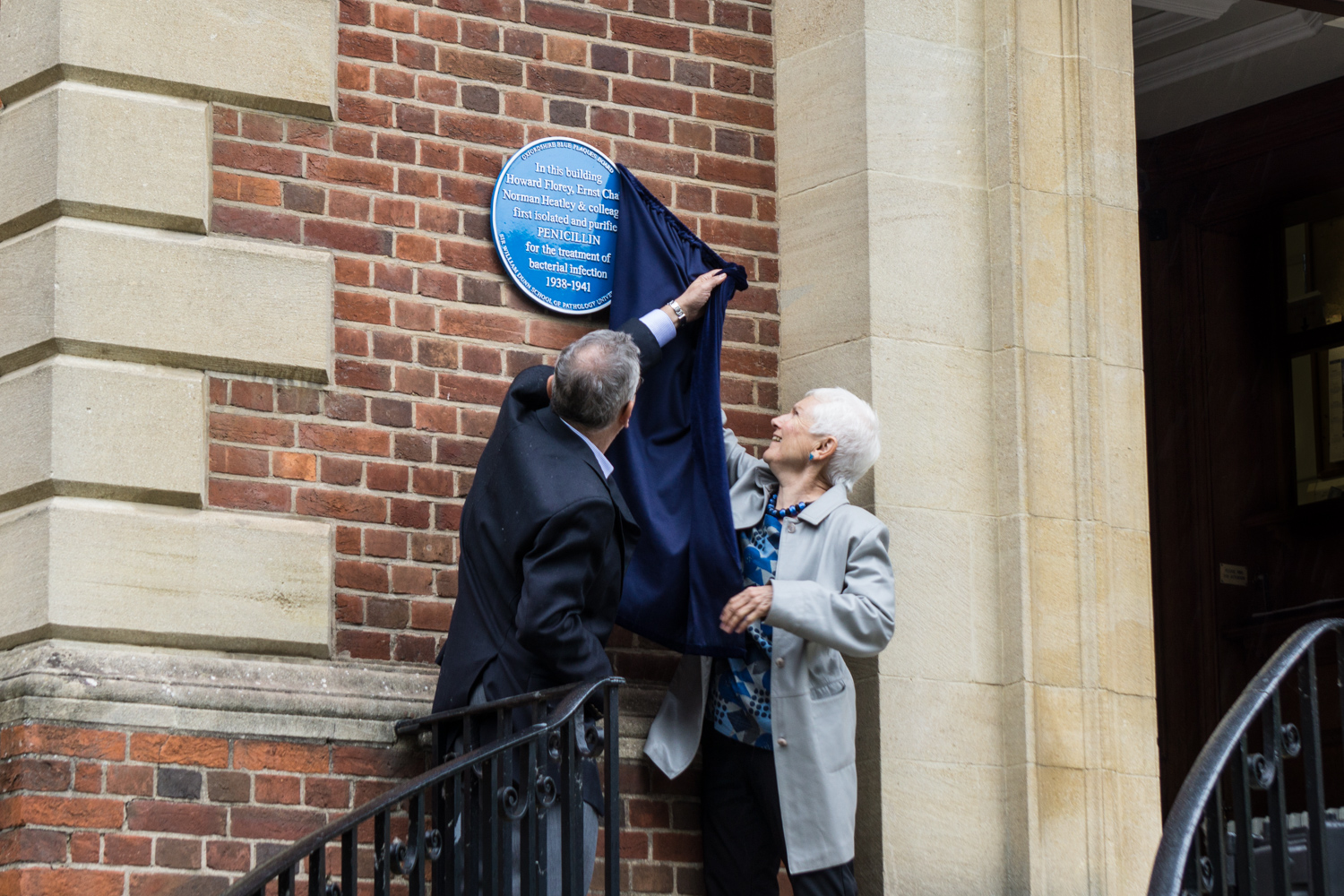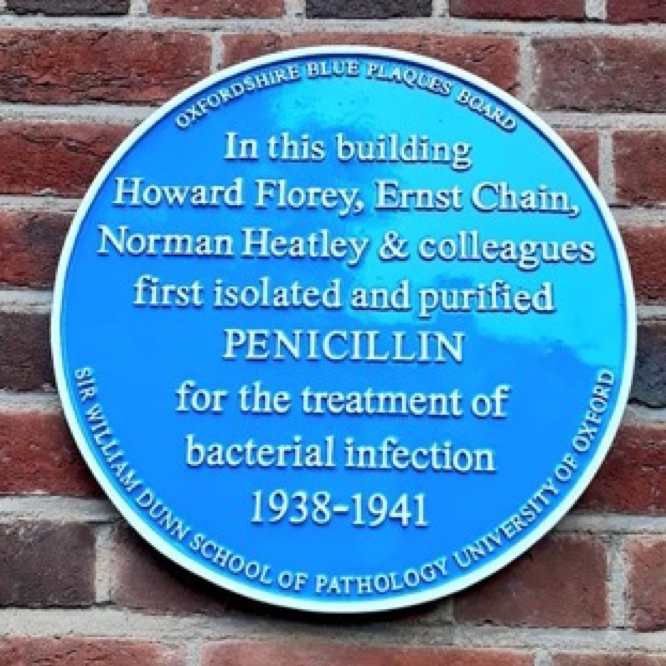Blue Plaque Commemorating Penicillin and The Dunn School Unveiled at Department
The Sir William Dunn School of Pathology has had a long history of research successes since the building’s opening in 1927. On the 29thof May in 2018, a piece of that history was recognised with the installation and unveiling of a Blue Plaque, which are commemorative signs installed at places of historical significance, serving as a link between the location and extremely important events or persons who have made huge contributions to society. In this instance, the Plaque commemorates the role of Dunn School scientists in the development of penicillin as a history-making antibiotic, and was installed adjacent to the main entrance of the department, visible to passersby. The inscription on the plaque reads: In this building Howard Florey, Ernst Chain, Norman Heatley & colleagues first isolated and purified PENICILLIN for the treatment of bacterial infection 1938-1941.
Additionally, as Robert Evans, Chair of the Oxfordshire Blue Plaque Board noted during the unveiling, the plaque is unique in that it is the first of a pair in Oxford. Its sister Plaque was unveiled an hour later at the Radcliffe Infirmary, where the first human trials involving purified penicillin took place.
“It celebrates one of the world’s greatest stories of drug discovery, ever,” said the current Head of the Department, Professor Matthew Freeman at the unveiling ceremony outside the entrance to the building. “It is one of those rare occasions where you can put a finger on the exact experiment that changes the world—an epoch changing event,” he said, pointing above his head towards the laboratories where the original mouse experiments involving penicillin were conducted, ushering in the age of antibiotics. Professor Freeman drew attention to the short time frame between initial experiments to human trials. “Three years—shorter than many PhDs… graduate students take note!” he joked, producing a moment of levity from the crowd under the thin rain that sparkled the event.
After acknowledging other players in the story of penicillin, including Nobel Laurate Dorothy Hodgkin, who discovered the structure of penicillin, Professor Freeman introduced Rose Heatley and Benny Chain. The respective children of Norman Heatley and Ernst Chain, Rose and Benny together had the honor of officially unveiling the plaque commemorating their parents’ key scientific contributions. Rose later described how interesting it was for her to walk up the steps towards the plaque to unveil it, as she recalled walking up the steps many times to visit her father for lunch many years ago as a child, around the time of the experiments. A scientist and professor himself, Benny described to a BBC news reporter how it was great that the story he had already heard so much about was being recognized at the Dunn School.
Before concluding his speech, Professor Freeman took a moment to stress the importance of the interdisciplinary nature of the team that worked on penicillin, a trait that he believed was crucial to its success. Acknowledging the continued interdisciplinary relationships existing within the Dunn School at present, he expressed confidence that the story of penicillin, while perhaps the first in the department to be recognised with a blue plaque, might not be the last—“You ain’t seen nothing yet!”
Written by Derek Xu @derekcxu
Photos by Tatjana Terentjeva – to view the full gallery see: https://www.path.ox.ac.uk/content/blue-plaque-unveiling-ceremony
For further coverage, see:
- BBC news article: https://www.bbc.co.uk/news/uk-england-oxfordshire-44293611
- Voices from Oxford webcast: http://www.voicesfromoxford.org/video/oxford-penicillin-blue-plaque/862


